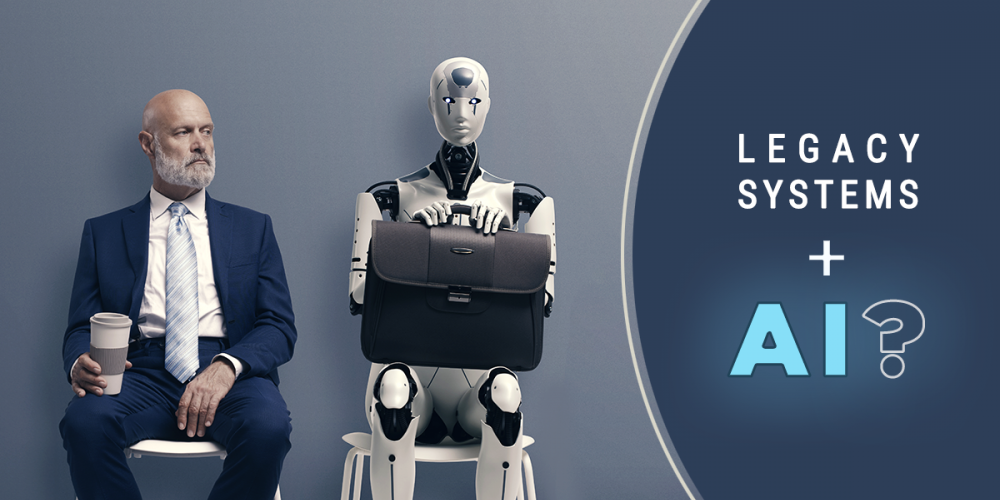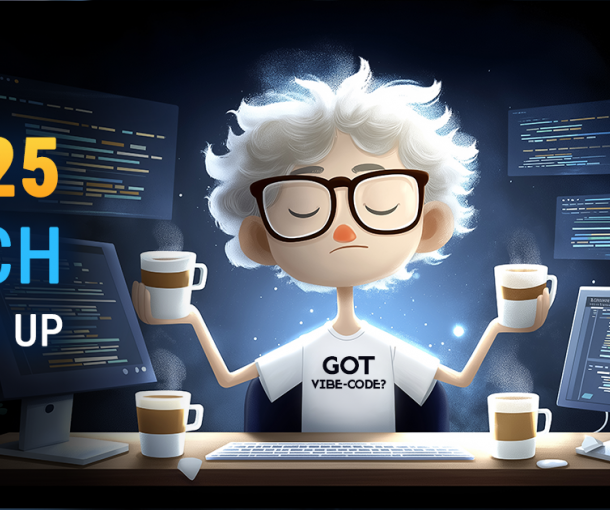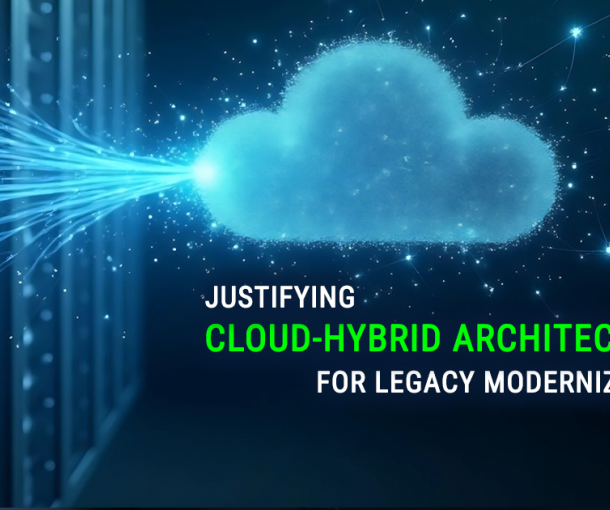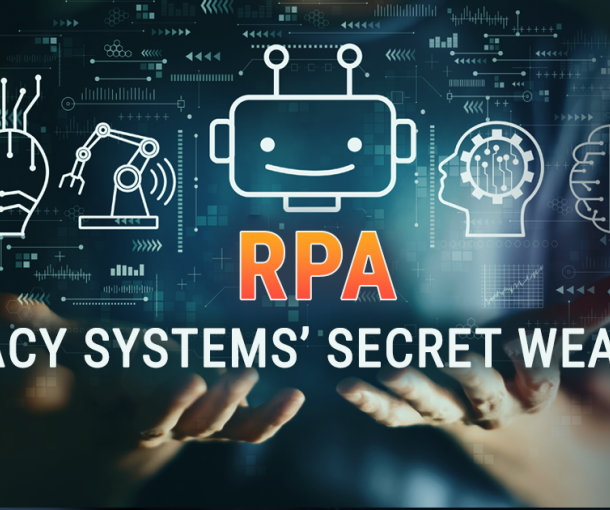
Legacy Software + AI?
What Tech Leaders Need to Know Before Jumping on the AI Bandwagon
For many organizations, legacy software systems are both mission-critical and increasingly difficult to manage. These systems often sit at the heart of business operations, yet struggle to keep pace with modern demands, integrate poorly with new tools, and are costly to maintain. Traditionally, updating or replacing these systems has been a slow, high-risk endeavor. But, with the rise of Artificial Intelligence (AI), tech leaders now have a powerful new option to support, modernize, and even revitalize legacy systems.
AI is not a silver bullet, but it offers several promising capabilities that can accelerate modernization, reduce maintenance burdens, and uncover valuable insights hidden within aging code and data. In this post, we explore how AI can help with legacy software projects, what CIOs and CTOs need to consider before adoption, and why partnering with a third-party vendor can be a smart strategy.
Supporting Legacy Software Projects with AI
AI tools and techniques are rapidly changing the way organizations approach legacy modernization. Here we cover the practical ways AI can assist:
1. Automated Code Analysis
AI-driven code analysis tools can scan millions of lines of legacy code to identify patterns, dependencies, redundancies, and potential vulnerabilities. Automated analysis saves time and increases accuracy compared to a manual review, helping teams quickly understand systems that may lack proper documentation.
2. Code Refactoring and Translation
Machine learning models trained on software repositories can assist in automatically refactoring legacy code (e.g., COBOL, VB6, or Java) into modern languages such as JavaScript, Python, or .NET. While not always perfect, AI-assisted translation significantly reduces the manual effort and risk associated with rewriting codebases from scratch. Auditing AI reviewed code is recommended, especially with mission critical systems.
3. Predictive Maintenance and Performance Monitoring
AI models can analyze system logs and user behavior to predict when a legacy system is likely to fail or slow down. This allows IT teams to proactively address issues before they become critical, minimizing downtime, and improving system reliability.
4. Intelligent Process Mining
Legacy systems often support complex business workflows that have evolved over time. AI-powered process mining tools can map out how these systems are being used, identify inefficiencies or bottlenecks, and suggest opportunities for process optimization.
5. Natural Language Interfaces and Documentation
Using AI to generate user-friendly documentation or even create conversational interfaces (e.g., chatbots) allows users to interact with legacy systems without having to navigate outdated and often confusing interfaces.
Is AI Right for Your Legacy Project?
Despite its promise, AI is not a one-size-fits-all solution. Determining if AI is appropriate for your legacy modernization project is only one of the challenges tech leaders are facing today. These key steps can help identify fit before you move forward with AI:
1. Assess the Business Value
AI initiatives must align with clear business goals. Ask yourself whether the legacy system in question supports critical operations, and whether AI will reduce cost, increase speed, improve service delivery, or unlock new revenue. If the answer is yes, it may be a viable candidate for AI-driven support.
2. Evaluate Data Quality and Availability
AI thrives on data. Unfortunately, legacy systems often lack structured, clean, or accessible data. Leaders should assess what data is available and its quality, whether it can be extracted securely, and whether it is sufficient to train reliable models or fuel automation.
3. Understand Technical Debt and Constraints
Not all legacy systems are equally amenable to AI intervention. High technical debt, undocumented code, and proprietary architectures can limit the effectiveness of AI tools. Completing a technical feasibility assessment is essential before investing resources in AI adoption.
4. Consider Organizational Readiness
AI projects require cross-functional collaboration between software engineers, data scientists, and business stakeholders. Evaluate whether your organization has the in-house talent and cultural readiness to support an AI initiative—or whether outside expertise is needed.
5. Identify Measurable Outcomes
Clearly define what success looks like. Whether it’s reduced time to deploy, improved system uptime, or a percentage of code automatically translated, measurable KPIs are vital to keeping the project on track, justifying investment and maintain stakeholder engagement.
Why a Third-Party Vendor Can Make the Difference
Legacy modernization using AI is a highly specialized domain, requiring a mix of legacy system knowledge, modern AI expertise, and practical software engineering experience. Organizations often turn to skilled, third-party vendors to accelerate their success with legacy modernization. Here’s how a third-party vendor can help:
1. Deep Expertise and Toolsets
Vendors focused on legacy modernization and AI often bring tested methodologies and proprietary tools that can accelerate analysis, refactoring, and implementation. Their experience may include work on similar systems and the knowledge of how to avoid common pitfalls.
2. Access to Specialized Talent
AI engineers, data scientists, and software migration experts are in short supply. A qualified vendor gives you immediate access to these skill sets without the time, or costs associated with the recruiting, hiring, and onboarding of an internal hire. Seeking a third-party vendor that offers staff augmentation services is a great way to integrate internal teams with external expertise.
3. Reduced Risk and Faster Delivery
By combining automation with deep experience, vendors can reduce project risk, avoid rework, and speed up timelines. For projects that are time sensitive, it is advisable that tech leaders evaluate third party options as they can often hit the ground running with minimal ramp up time.
4. Unbiased Strategy and Evaluation
An external partner can offer an objective perspective on whether AI is the right tool for your modernization needs—or if other approaches like re-platforming or containerization are more suitable. Seeking a third-party partner that can offer tech agnostic advice is a cost-effective approach to begin building your AI-Legacy strategy.
5. Ongoing Support and Optimization
Modernization is not a one-and-done project. The right partner will provide ongoing monitoring, model retraining, and system updates to ensure AI tools continue to add value over time. When evaluating your third-party vendor options, reviewing their ongoing support model options can help shift portions of the project investment to operational budget line items, helping bring down upfront costs.
Final Thoughts
AI offers powerful new capabilities for addressing legacy software challenges, but it’s not a magic wand. Success depends on thoughtful evaluation, high-quality data, and a clear connection to business outcomes. For many organizations, working with a third-party vendor helps bridge internal skills gaps, accelerate delivery, and ensure responsible and ethical use of AI.
As legacy systems age and the pace of business increases, tech leaders must explore every available option—including AI—to keep their technology landscape agile, secure, and future ready. Companies who act now, with the right strategy and partners, will be well-positioned to thrive in an increasingly digital world.
Still have questions on whether AI is right for your legacy project? We offer a complimentary, no obligation, 30-minute review of your project to help get you started.


